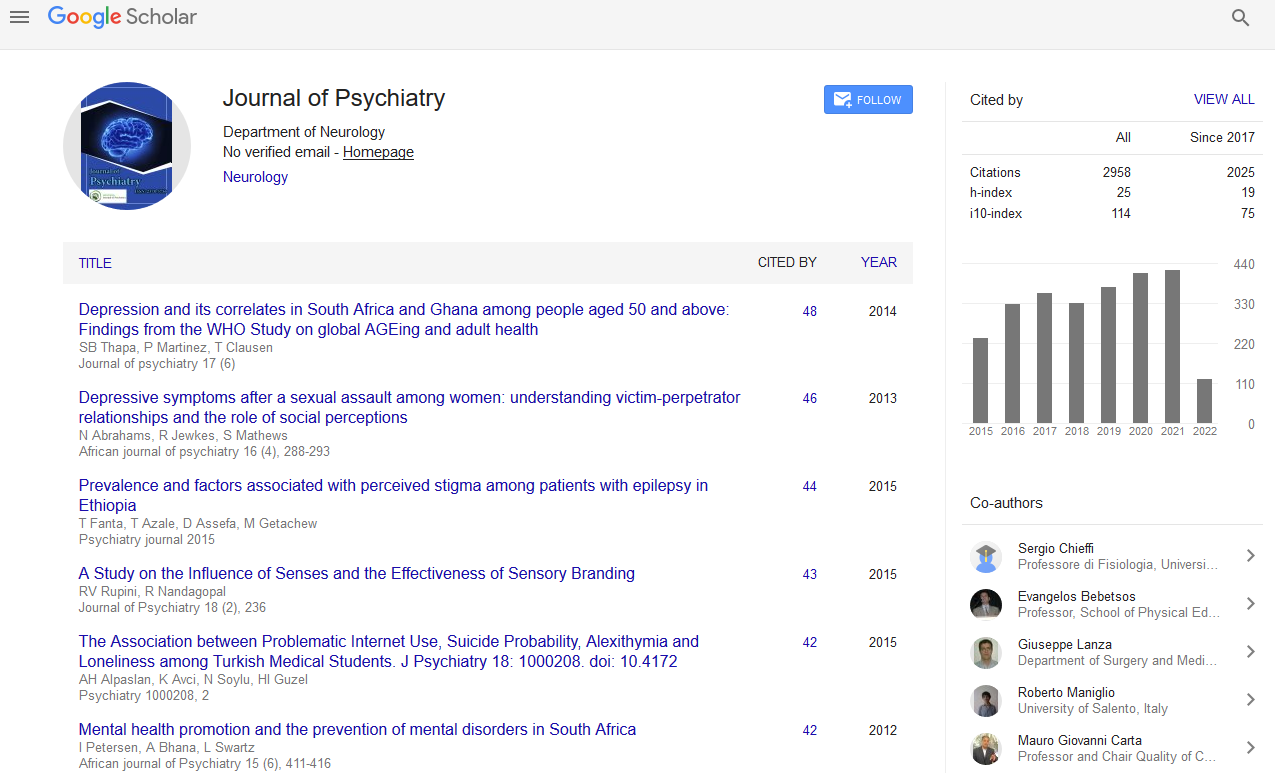PMC/PubMed Indexed Articles
Indexed In
- RefSeek
- Hamdard University
- EBSCO A-Z
- OCLC- WorldCat
- SWB online catalog
- Publons
- International committee of medical journals editors (ICMJE)
- Geneva Foundation for Medical Education and Research
Useful Links
Share This Page
Open Access Journals
- Agri and Aquaculture
- Biochemistry
- Bioinformatics & Systems Biology
- Business & Management
- Chemistry
- Clinical Sciences
- Engineering
- Food & Nutrition
- General Science
- Genetics & Molecular Biology
- Immunology & Microbiology
- Medical Sciences
- Neuroscience & Psychology
- Nursing & Health Care
- Pharmaceutical Sciences
Abstract
Retrospective Study of Trazodone Monotherapy Compared with Ramelteon and Trazodone Combination Therapy for the Management of Delirium
Takao Ishii, Takafumi Morimoto, Masaki Shiraishi, Yoshiyasu Kigawa, Kenji Narita, Keisuke Inoue and Chiaki Kawanishi
Background: Accumulating evidence supports the efficacy of antipsychotics in patients with delirium. However, extrapyramidal symptoms caused by antipsychotic medications represent a major concern in the pharmacotherapy of delirium, meaning that therapeutic alternatives using drugs other than antipsychotics are required. The aim of this study was to compare the efficacy and tolerability of trazodone monotherapy with ramelteon and trazodone combination therapy for the management of the symptoms of delirium.
Methods: A case-control study was conducted in a general hospital setting. Delirium Rating Scale-revised-98 (DRS-R-98) scores were measured at the initial examination and at 3–7 days after starting the study drugs. Adverse drug reactions were also assessed.
Results: Thirty-three patients were retrospectively enrolled to the trazodone monotherapy group (T group) and 59 patients were enrolled to the ramelteon and trazodone combination therapy group (RT group). No significant differences in demographic characteristics were observed between the groups. Following treatment, the total DRS-R-98 scores were significantly reduced in both groups (22.0 ± 5.5 to 13.5 ± 8.5 in the T group and 23.7 ± 6.1 to 11.4 ± 8.6 in the RT group). However, the proportion of patients meeting the remission criteria was significantly higher in the RT group than in the T group (71% vs. 48%; chi-square=4.681, p=0.030). The most commonly reported side effect was somnolence, in the RT group (3%).
Conclusion: Our findings indicate that both trazodone monotherapy and combination therapy of ramelteon and trazodone were effective in managing the symptoms of delirium. However, more patients met the remission criteria following combination therapy with ramelteon and trazodone. In both groups, the incidence of adverse drug reactions was very low.


